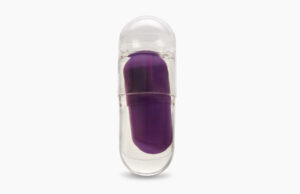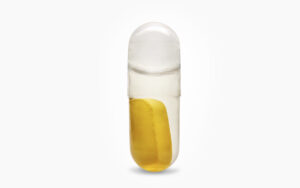Pharmaceuticals
Advancing oral solid dosage forms - rising trends in pharmaceuticals and nutraceuticals 1st July 2021
Anita Solanki, Lead – White Paper & Publications, ACG Capsules; Dr. Milind Biyani, Consultant, ACG Capsules; and Dr. Jnanadeva Bhat, Head – Formulation R&D (Pharma and Nutra), ACG Capsules discuss how innovation and new developments in solid dosage forms for pharmaceuticals and nutraceuticals are being driven by the need to differentiate a company’s products those of others in these highly competitive areas of business.
Throughout the ages, pharmaceutical products have been available in a variety of dosage forms. From time to time we see the introduction of innovative new dosage forms, such as oral films, needleless syringes, wearable injectors or skin implants. However, despite the wide range of dosage forms available, the demand for oral solid dosage forms remains unparalleled and dominant in both the pharmaceutical and nutraceutical sectors.Whilst the nutraceutical market almost exclusively focuses on oral administration for dietary supplements, a range of dosage forms are often utilized in the pharmaceuticals segment, including injectable, topical, rectal and pulmonary in addition to oral dosage forms.
Innovation in all these fields is fueled by the need to differentiate, and to deliver sustainable, advanced products in the crowded pharmaceutical and nutraceutical markets.
This article looks at the enduring popularity of oral solid dosage forms and the rising trends which are becoming established across both the pharmaceutical and the nutraceutical sectors.
The enduring popularity of oral solid dosage forms
There are several reasons why oral solid dosage forms retain their popularity and continue to be a significant focus for continued research.
First, this form is well understood and accepted globally and has major advantages, including ease of consumption, handling and patient compliance. However, there are always improvements to be made in these areas, and oral solid dosage forms offer an excellent platform for creating products which further advance patient experience and compliance.
Second, the massive demand for oral solid dosages has ensured the introduction of innovative technologies and materials to suit the specific needs of emerging consumer groups, new active ingredients, and varied formulations. As a result of the huge variety of options, sizes and sophisticated manufacturing processes available for solid dosage forms, they are a well-suited and cost-effective option to develop new products, or to improve existing formulations. Additionally, there is a drive to incorporate newer therapeutic forms such as peptides and biologics into easily consumable oral forms.

Rising trends: pharmaceuticals
Patient-centric care
Patient-centric pharmaceutical drug design has become increasingly important, and it continues to be one of the most significant trends in medicine. This is, in part (particularly in the nutraceutical sector), due to the market becoming more saturated, thus resulting in a growing need to differentiate and to operate from a more consumer-focused perspective. The FDA is also encouraging patient-focused drug development which will ensure that patients’ needs and concerns are incorporated into the drug development and dosage form.
One of the primary ways manufacturers can make drugs more patient-friendly is by creating solid orals that are easier to swallow and handle. This is especially important for pediatric and geriatric populations. For these groups, formulating medicines into sprinkle capsules, mini- or micro-tablets can improve the consumer experience, as well as overall compliance. Fast-dissolving, fast-dispersing, or fast-melting formulations are also more accessible to these consumers. Other methods of providing patient-friendly dosages include segmented easy-to-score tablets, gel-forming easy-to-swallow oral films, multiple scored tablets, and solid dosage pen devices.
 Concealing unpleasant tastes and odours is also critical for patient-centred care. Hard capsules can offer an advantage in cases where masking taste and odour is necessary due to their low oxygen transmission rates (OTR).
Concealing unpleasant tastes and odours is also critical for patient-centred care. Hard capsules can offer an advantage in cases where masking taste and odour is necessary due to their low oxygen transmission rates (OTR).
Micro tags and DNA tagging
Counterfeiting continues to threaten consumer safety and brand reputations. A new way of fighting fake medicines is emerging that involves making micro tags of inert materials such as silicon dioxide, invisible printing, and DNA printing with multiple security codes printed on their surface. The size of an average micro tag is 50–110 microns, which enables them to be printed inside or outside the capsule surface without changing existing manufacturing processes. For tablets, these tags can be included in coating or printing.
Complex oral delivery for novel therapeutics
Novel forms of therapeutics are emerging, including insoluble drugs, biologics, and peptides. For the delivery of these, complex dosage forms are being created.
In 2015, it was reported that the majority of failures in new drug development were attributed to the poor water solubility of that drug. Additionally, it was estimated 90% of drugs in the discovery pipeline were poorly water-soluble.1 However, there are methods now available that present a solution to this issue. Micronization or nano milling reduces the size of API particles in order to improve solubility. Another technique involves creating solid dispersions in a carrier polymer, such as HPMC, which increases solubility by avoiding the creation of insoluble API crystals. Lipid- or polymer-based systems are also used to encapsulate insoluble drugs. Polymeric (PLGA) particles, solid-lipid particles, liposomes, and reverse cubic phase particles are technologies that are growing in popularity as a result of needing to improve solubility.
There is a demand for the development of oral and nasal forms of biologics and peptides to improve patient compliance, as currently these novel therapeutics are more commonly provided as injectables. Absorption enhancers, conjugation with other entities, and gastro-retentive delivery systems are increasingly being used to achieve the oral administration of these drugs.
Robotic pills
Robotic pills are an interesting new development. They utilize chemical signals to trigger a series of reactions that lead to the dosing of the drug in the correct environment.2 The capsule-like tablet is enteric-coated and, once swallowed, travels through the gastrointestinal tract until it reaches PH >6.5, in the small intestine. The shell dissolves at the higher PH under the generation of carbon dioxide, which inflates a balloon contained within the capsule. This reaction exposes dissolvable sucrose-based microneedles which deliver the drug by piercing the intestinal wall, thus enabling it to be rapidly absorbed.3
 3D printing for customized dosing
3D printing for customized dosing
3D printing is influencing manufacturing across every sector, in particular bespoke, specialist and low-volume products.
In the pharmaceutical industry, 3D printing is allowing companies to develop novel dosage forms quickly, and at low cost. As a result of this technology, it is possible to create complex drugs and include multiple APIs in one single dosage form. In line with the demand for greater customization and patient-centric products, a single oral solid dosage form can be designed to have a unique release profile, or even bespoke designs adapted to the consumer needs. As 3D printing becomes more widespread and affordable, the possibility of printing drugs at a pharmacists’ lab or even in a patients’ home could one day become a realistic option.
Combination fill capsules
 Combination fill capsules is an exciting area. This trend encompasses powders, pellets, mini/micro tablets, or smaller capsules that are filled into a hard capsule. These products contain multiple active ingredients and can be used to avoid challenges or solve issues associated with certain formulations. Different molecules in separate forms ensure that there is no possibility of drug interactions, even if delivered through one single vehicle.
Combination fill capsules is an exciting area. This trend encompasses powders, pellets, mini/micro tablets, or smaller capsules that are filled into a hard capsule. These products contain multiple active ingredients and can be used to avoid challenges or solve issues associated with certain formulations. Different molecules in separate forms ensure that there is no possibility of drug interactions, even if delivered through one single vehicle.
Utilizing combination fill technology can be beneficial for offering fixed-dose combinations, once-daily combinations, multi-drug resistance therapies, and avoiding missing doses. Combination fill capsules can also provide a variety of release profile options. For example, Immediate release (IR) with extended release (ER) or delayed release (DR).
The following provides examples of combination fill capsule options and their benefits:
- Capsule-in-capsule offers the advantage of avoiding multiple drug interaction and incompatibilities.
- Multiple pellet filling offers a great degree of uniformity by preventing the segregation of pellets, as well as providing a sustained-release drug profile.
- Mini- and micro-tablets deliver greater accuracy in weight variation, offer different release profile options, and facilitate controlled absorption within the gastrointestinal tract.
Advances in manufacturing methods for this drug delivery form are already being made. Innovations to various capsule filler technologies and customized solutions retrofitted to existing machines enable manufacturers to produce these specialized products by improving the financial viability of producing these medicines.
Rising trends: nutraceuticals
HPMC capsules
Traditional, animal-origin gelatin capsules are increasingly being replaced by those made from materials of vegetarian sources such as cellulose, starch, carrageenan, and pullulan (polysaccharide). This trend has accelerated as a result of the increasing numbers of individuals choosing to lead a vegan or vegetarian lifestyle. Plant-based capsule alternatives such as HPMC (hydroxypropyl methylcellulose) are inert and stable, and have been developed to cater to the needs of these customer bases.
As the nutraceutical sector is witnessing a significant growth globally, manufacturers need to cater to individuals with a range of dietary requirements. HPMC capsule variants provide a popular alternative for consumers, as they contain no preservatives, gelatin, wheat, gluten or animal by-products.
HPMC capsules also offer a range of other benefits. Their low inherent moisture content (3-8% w/w) makes them a superior choice over gelatin capsules for formulations where moisture significantly affects the product’s stability. For example, hygroscopic ingredients or formulations filled in gelatin capsules may absorb the moisture from the shells leading to shell brittleness. In contrast, HPMC capsules are suitable for filling hygroscopic ingredients and pose no such issues. This ensures product integrity and long-term efficacy. Carbon-critical nutraceutical extracts are largely hygroscopic in nature and can also be filled in HPMC capsules. Sensitive formulations can be encapsulated in HPMC capsules, even at lower relative humidity areas, without any challenges.
Liquid-filled hard capsules
Similar to combination fill products for pharmaceuticals, liquid-filling in hard capsules is a trend growing in popularity in the nutraceutical sector. It allows the encapsulation of natural oils directly, liquids, and semi-solids in hard capsules. With combination filling possibilities, incompatible ingredients can be encapsulated in order to offer multidose and multiphasic delivery in single capsules.
Possibilities for liquid encapsulation include capsule-in-capsule, tablet-in-capsule and pellets-in-capsule. Each of these have their own benefits and can offer increased ingredient compatibility and delivery options. As an example, in the capsule-in-capsule form, one active ingredient is dissolved or dispersed in a solvent, while the other is encapsulated in a smaller capsule and placed into the liquid-filled capsule. This segregates the two active ingredients, therefore avoiding stability or incompatibility concerns.
‘Clean-label’ and eco
‘Clean-label’ products are a growing trend, as consumers increasingly opt for less-processed, healthier products prepared using pure, plant-based ingredients. ‘Clean-label’ encompasses a complex set of consumer standards and values, but generally means the absence of artificial, synthetic or unnecessary additives or excipients and synthetic chemicals.
Consumers are also actively seeking to avoid non-sustainable goods. As a result, many brands are finding ways to reduce their ecological footprint and achieve sustainable manufacturing and packaging products.
In summary
Consumers are also actively seeking to avoid non-sustainable goods. As a result, many brands are finding ways to reduce their ecological footprint and achieve sustainable manufacturing and packaging products. Amongst the increasing numbers of products being introduced into the nutraceutical and pharmaceutical markets, oral solid dosage forms endure as one of the most popular methods of administering medicines and dietary supplements. The trends described here demonstrate the exciting developments and ongoing innovations in this area, which ensure that this form remains at the forefront of dependable, cost-effective and convenient drug development and administration.
References:
1.Sandeep Kalepu and Vijaykumar Nekkanti, Acta PharmaceuticaSinica B, ‘Insoluble drug delivery strategies: review of recent advance and business prospects’, Volume 5, Issue 5, (2015), p.442-453
3.https://www.sciencedirect.com/science/article/pii/S1359644621000490


